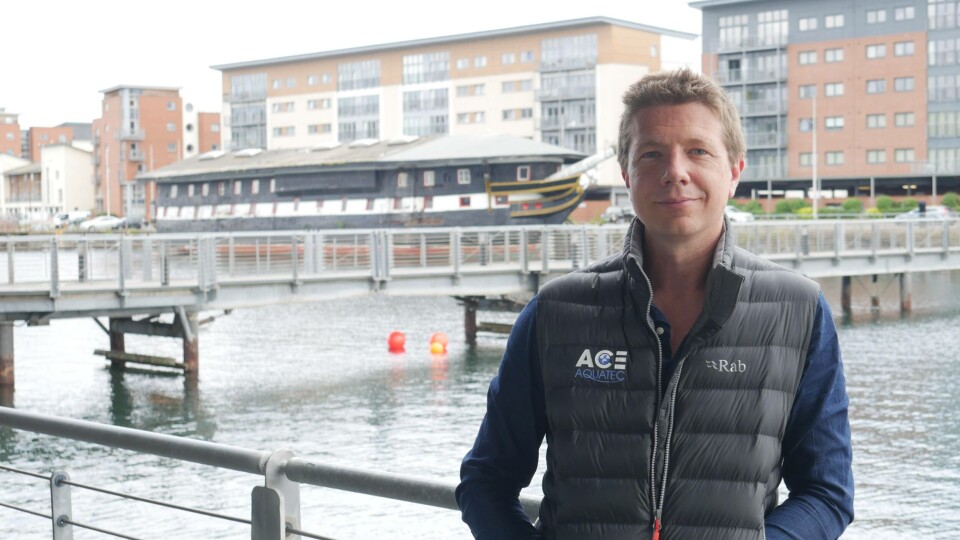
Ace Aquatec chief joins call for action over seal attacks on fish farms
Nathan Pyne-Carter, the chief executive of Dundee-based aquaculture technology supplier Ace Aquatec, has backed the salmon farming industry’s call for urgent talks with Scottish government ministers to find a solution to seal attacks that are costing salmon producers around £13 million a year in lost revenue.
Salmon farmers can no longer shoot problem seals as a last resort and the use of acoustic deterrent devices (ADDs) has been discontinued following advice from Scottish government agency Marine Scotland that they might cause harm or disturbance to cetaceans (whales, porpoises and dolphins), which are designated as European Protected Species (EPS) in law. ADDs might therefore require an EPS licence to permit their use.
The removal of these seal control options mean farmers must now rely only on anti-predator nets to protect their stock, but these do not stop seals stressing the fish by pushing at the nets, or from sometimes climbing on to pen walkways and into the pens.
Harmless to cetaceans
Salmon Scotland (formerly the Scottish Salmon Producers’ Organisation) does not want permission to shoot seals reintroduced but wants Marine Scotland to clarify the position on what ADDs its members can use, if any.
Ace Aquatec has developed a range of next-generation acoustic and electric shock seal scarers that do not harm the seals or cetaceans, but these have not yet been given the green light by Marine Scotland.
Pyne-Carter said: “Statistics recently published by Salmon Scotland have starkly highlighted the cost salmon farmers are paying in lost fish and revenue due to seal predation. We support the call to action for further government talks as it is critical that farmers are able to protect their livestock and livelihood from this escalating issue.
Blended approach
“Our recent advances in startle response technology help enable farms to take a blended approach to predator control. The most successful safeguards against predation are a multi-faceted approach that incorporates new generation acoustic and electric startle response systems, reinforced anti-predator netting, and good farming practices. This combination can ensure that predators are responsibly encouraged to predate on wild, not farmed, fish.
“Marine Scotland have created a process which is not transparent and makes no exception for technologies which fall outside the scope of the EPS process.”
The latest versions of Ace Aquatec’s Acoustic Startle Response (ASR) and Electric Startle Response (ESR) equipment are triggered when a system of cameras, night vision and thermal imaging identifies an approaching predator. The Artificial Intelligence-linked cameras are trained to recognise the shape of seals’ heads bobbing at the surface of the water and can distinguish seals from porpoises and whales.
Electric fence
The ASR has signal characteristics that focus on sound quality rather than volume, enabling Ace Aquatec to tailor the frequency of the device to the hearing sensitivity of a target species. The sounds are programmable, randomised pulses with 3- to 10-millisecond rise times. Ace Aquatec says the short amount of time from the onset of the sound to its highest peak creates a visceral response in mammals that cannot be overcome.
Successive encounters with this noise create sensitisation (gets worse) rather than habituation (gets used to it) which means that sound is more impactful at lower volumes on successive encounters. The company adds that the system keeps being effective because it randomises the frequency of the pulses, the volume of pulses and the duration of silences.
There are three ESR devices: an electric fence to deter seals from climbing into a pen, and an electric net and “electric fish” – a fake mort with protruding electrodes – to give below-surface protection. The ESR devices give a seal a harmless but unwelcome shock.























































